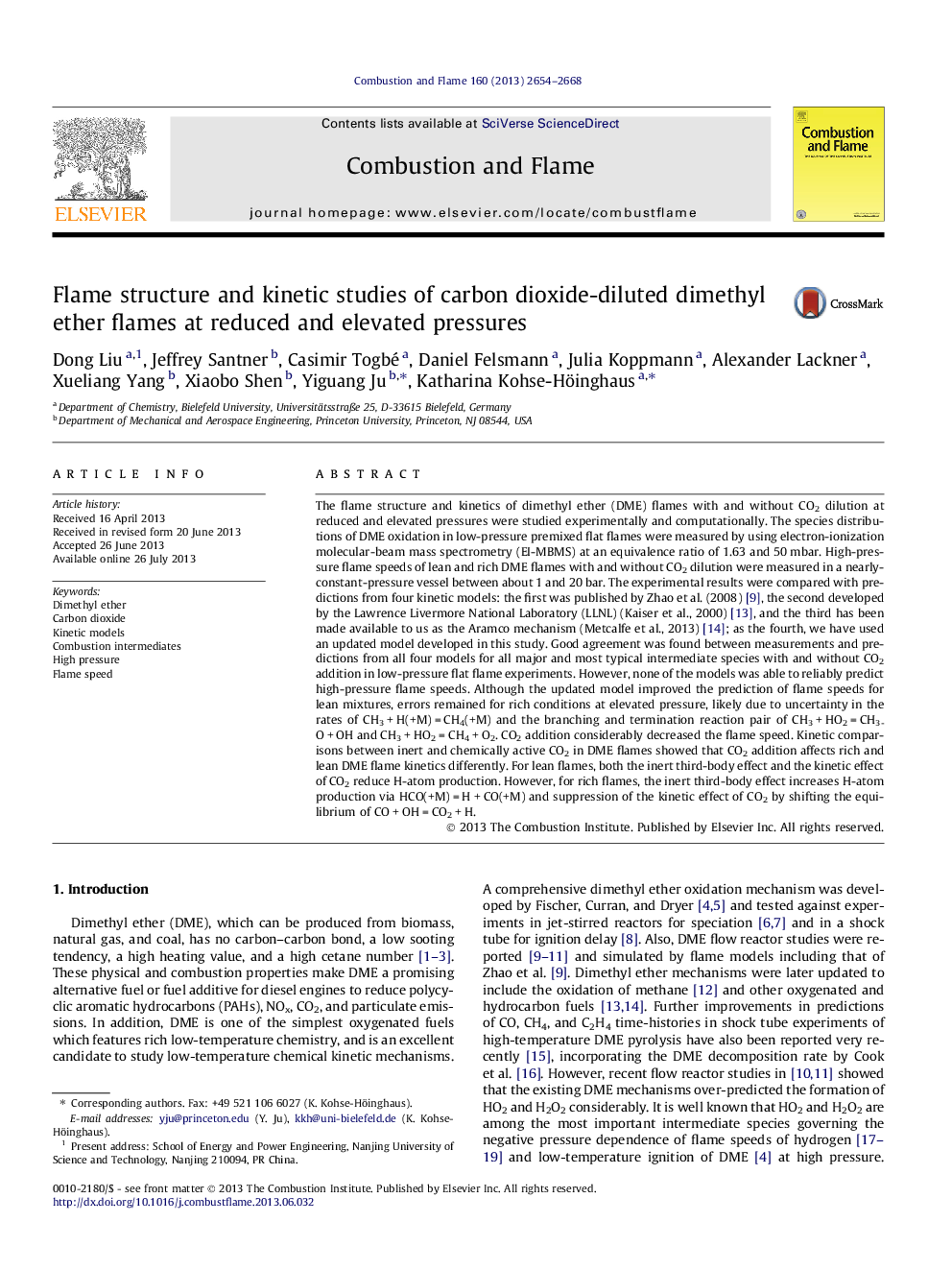| کد مقاله | کد نشریه | سال انتشار | مقاله انگلیسی | نسخه تمام متن |
|---|---|---|---|---|
| 166783 | 457819 | 2013 | 15 صفحه PDF | دانلود رایگان |

The flame structure and kinetics of dimethyl ether (DME) flames with and without CO2 dilution at reduced and elevated pressures were studied experimentally and computationally. The species distributions of DME oxidation in low-pressure premixed flat flames were measured by using electron-ionization molecular-beam mass spectrometry (EI-MBMS) at an equivalence ratio of 1.63 and 50 mbar. High-pressure flame speeds of lean and rich DME flames with and without CO2 dilution were measured in a nearly-constant-pressure vessel between about 1 and 20 bar. The experimental results were compared with predictions from four kinetic models: the first was published by Zhao et al. (2008) [9], the second developed by the Lawrence Livermore National Laboratory (LLNL) (Kaiser et al., 2000) [13], and the third has been made available to us as the Aramco mechanism (Metcalfe et al., 2013) [14]; as the fourth, we have used an updated model developed in this study. Good agreement was found between measurements and predictions from all four models for all major and most typical intermediate species with and without CO2 addition in low-pressure flat flame experiments. However, none of the models was able to reliably predict high-pressure flame speeds. Although the updated model improved the prediction of flame speeds for lean mixtures, errors remained for rich conditions at elevated pressure, likely due to uncertainty in the rates of CH3 + H(+M) = CH4(+M) and the branching and termination reaction pair of CH3 + HO2 = CH3O + OH and CH3 + HO2 = CH4 + O2. CO2 addition considerably decreased the flame speed. Kinetic comparisons between inert and chemically active CO2 in DME flames showed that CO2 addition affects rich and lean DME flame kinetics differently. For lean flames, both the inert third-body effect and the kinetic effect of CO2 reduce H-atom production. However, for rich flames, the inert third-body effect increases H-atom production via HCO(+M) = H + CO(+M) and suppression of the kinetic effect of CO2 by shifting the equilibrium of CO + OH = CO2 + H.
Journal: Combustion and Flame - Volume 160, Issue 12, December 2013, Pages 2654–2668